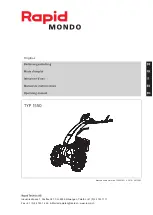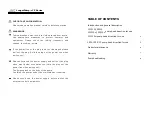
38
OpenSPR 1-Channel Operation Manual V4.1.01
The buffer change procedure will take approximately 21 minutes to complete to fully exchange
the buffer in the system. During this process, it is recommended to flush at least 2 mL of the new
running buffer through the injection port.
The buffer change event will be marked on the timeline with a solid line. The response signal will
change during the last 5 minutes of the buffer change process, depending on the refractive index
of the new buffer compared to the original. For example, if the refractive index of the new buffer
is higher than the original, this will result in an increase in the response baseline. A brief increase
or decrease in the response signal will be observed near the end of the buffer change process
when a separate fluidic line in the OpenSPR is flushed.
Figure 2.46 Example response graph of a buffer change to a higher refractive index running buffer.
Once the buffer change procedure is complete, the current working running buffer bottle will be
shown in the menu bar. It may take additional time for the baseline to equilibrize to the new
running buffer
–
it is recommended to wait until the baseline has stabilized until moving forward
with your experiment.
2.5.4
Flow Rate Controls
During a test, the user can change the flow rate in real time by using the drop-down menu located
in the menu bar [Figure 2.47]. The flow rate is used to control the interaction time of a sample
injection with the sensor.
Figure 2.47 Flow rate drop-down menu.
The interaction time of a sample injection is calculated based on the size of the sample loop
installed in the OpenSPR as well as flow rate:
















































